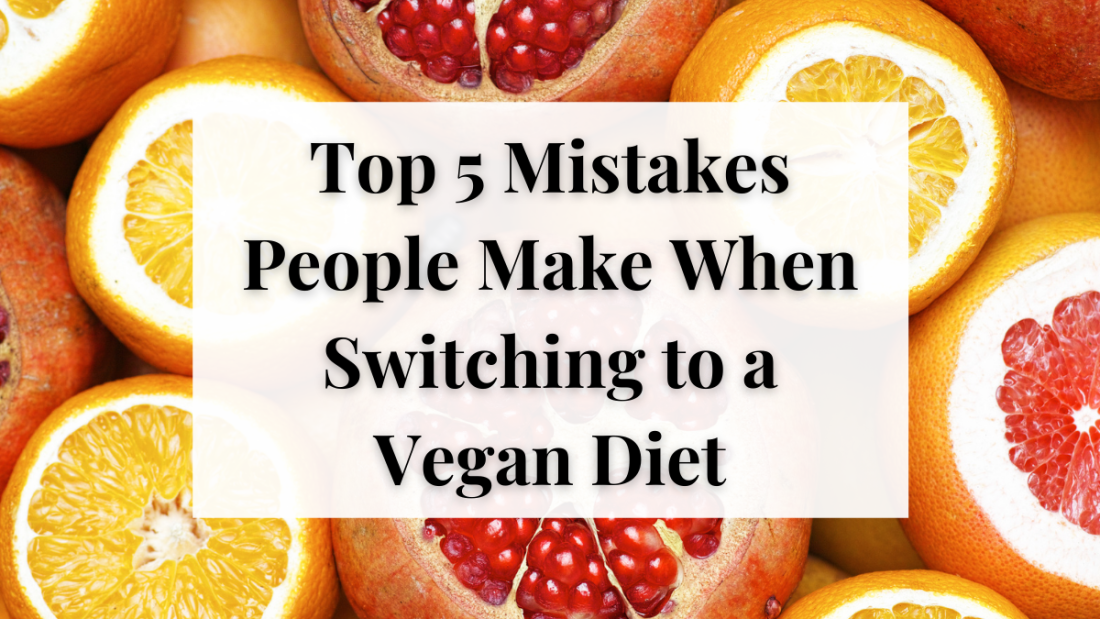
Vegan eating sometimes gets a bad reputation for simply being “too hard.” That, not surprisingly, keeps people thinking, “I could never do that!” Consider this, though: most major life changes are going to seem overwhelming, difficult and even scary at first. That is not a good reason not to try it! All you need to do is equip yourself with some good information to get you started. Great news, you’ve come to the right place. I’ll be honest, vegan eating, like anything new to you, will have a learning curve. For most people, this learning occurs through trial and error in their transition stage. This list is here to make the learning process and transition easier than ever before: it helps you avoid many of the mistakes new plant-based eaters make. Having a healthy (and easy) transition will make this lifestyle change all the more exciting and rewarding. Are you ready? OK, here’s the five unhealthy vegan-transition mistakes to avoid:
1. Doing Everything at Once When You’re not Ready
Understand that everyone has their own ways of making major life changes. For some, all it takes is a video on dairy cattle or factory farming and they’re off animal-products for good. For others, especially those seeking this lifestyle for environmental or health reasons, the transition may not be so smooth. There are cravings and attachments to certain animal-products to overcome. There are frustrated moments while grocery shopping or eating out. There are questions, comments and even criticisms from family, friends and, yes, sometimes even strangers. There are times when it feels you’re fighting a battle you can’t win. For those of you, be gentle with yourselves. This is a process of changing your life. If you push yourself into new food, new clothes, new furniture and more all at once, you may end up like many others who shy away altogether and denounce vegan eating itself as too much “work.” Don’t let this happen! Go at your own pace and feel good about any changes you do make. Tip: what has worked for many vegans I know is to eliminate one animal-product a week.
2. Not Understanding Calorie Contents
Know that not all foods satiate you the same. The meat, dairy, eggs, etc. you may be used to eating probably fill you up for hours because of high fat contents and caloric density. Transitioning to vegan eating means, for a lot of us, increasing our intake of produce. This is undeniably great, but keep in mind that most produce is very nutrient and water-rich in very small calorie packages. This means you get fuller faster, but will need to eat more food regularly to keep your calories up, your body functioning properly and your health in check. You can easily tackle this transition mistake by eating nuts, seeds, and legumes, higher calorie produce like avocados and bananas and just accepting you may need snacks now.
3. Not Understanding That Your Body is Going Through Changes
Did you know digesting meat can take days, whereas digesting plant-based foods only takes minutes to hours? This may not seem significant, but it makes a huge difference to the regular functioning of your entire body. Understand that if you’ve been eating a diet of meat, dairy, eggs, etc., your bodily system is used to that: it is used to allocating lots of energy to the digestive process and taking its time. Transitioning changes that process; your body will be playing “catch up” eliminating the animal-products from your system and replacing them with plant-based nutrition. This can cause some stomach upsets and discomforts at first. Know that your body is adjusting to this switch and getting healthier because of it. Get ready for more energy and a quicker digestive process! You can help this process along by remembering to drink plenty of fresh water, every single day.
4. Just Taking the Animal-Products Out
If you’re anything like myself, you may have grown up in a household where dinner consisted of some sort of animal, some sort of common grain and a vegetable serving. It can be challenging to consider meals in any other way, leading to new vegans just simply taking out animal-products. While those products definitely need to go when eating a vegan diet, there shouldn’t be an empty spot on your plate when that happens. Fill it up and try new products and crops to ensure a balanced and delicious meal.
5. Not Learning New Recipes
I know, I know, not everyone loves or even wants to cook. However, unless you plan to be a raw vegan or subsist on take-out alone, you’re going to need a few recipes to fuel your body with. Don’t shy away from trying new recipes and products—it is another one of the fun parts of changing your lifestyle! All it takes is a little learning and then once you get the basics of vegan cooking down, you can veganize literally any meal.